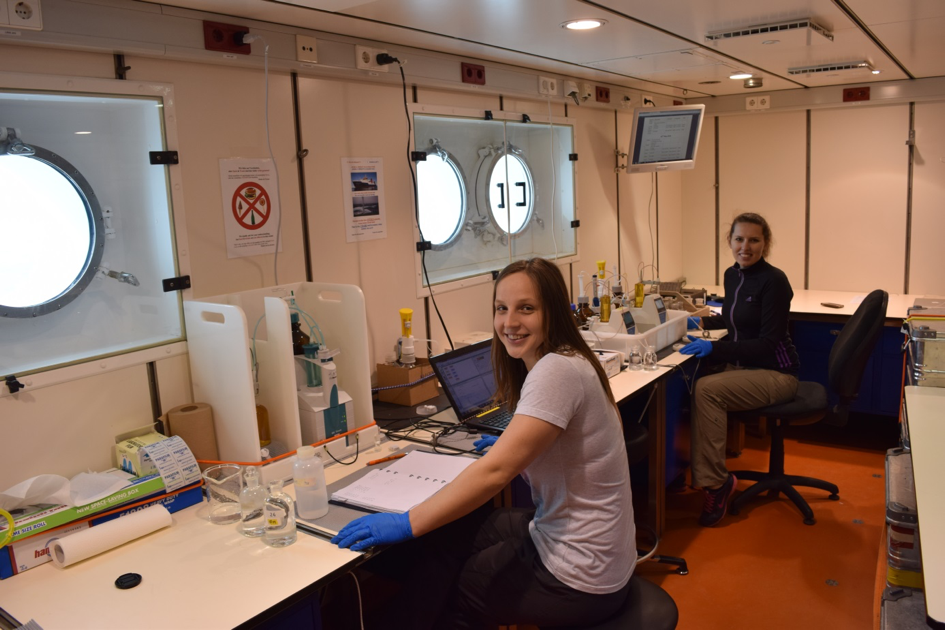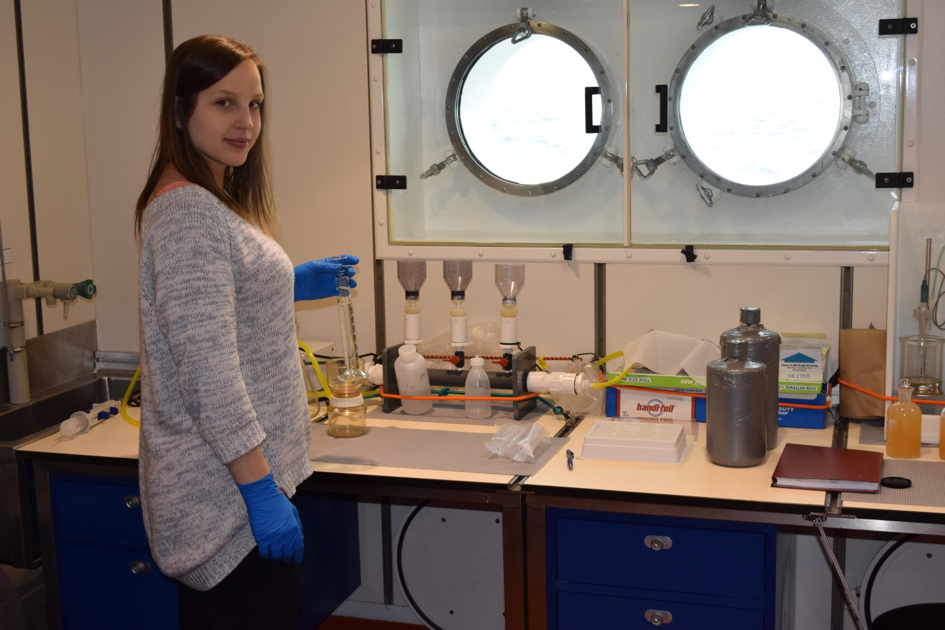By Dasha Atamanchuk
This doesn’t sound new: Having bad data is worse than having no data! Anyone who had to deal with ‘fishy’ numbers coming out from instrument will agree.
A strong motivation is driving Dalhousie team of scientists to work around the clock on collecting and processing water samples in order to produce QC data for e.g. oxygen sensors on CTD rosette, SeaCycler, a surface-profiling mooring, and other moorings. Only the sensor float of SeaCycler itself is populated with 13 (!) different sensors, which require in situ calibration. While some water samples can be processed straightaway in the chemistry lab onboard, the rest will be sent home and analyzed at Dalhousie University in Halifax, NS, Canada.
So what’s happening in the lab?
GEOMAR and Dalhousie provided two titration systems for the analysis of oxygen samples onboard. Chemistry behind the method was described by Winkler back in 1888 and with certain modifications it remains a gold standard for oxygen measurements for more than a century now. However two systems utilize their own detection method (voltammetry vs. colorimetry), sample volume and concentration of reagents. Despite all the differences, an agreement in oxygen values between two systems is impeccable. The results are truly encouraging for both GEOMAR and Dalhousie teams who rely on their systems in the assessment of instruments’ performance.
Chlorophyll and CDOM (Coloured Dissolved Organic Matter) samples are partly processed onboard and preserved for later analysis. The same concerns nutrients and the carbonate system probes.
Once the chemists have done their job, it’s up to the deployed instruments to show what is hidden in the blue and cold waters of the Labrador Sea. See CERC.OCEAN website for more information about the SeaCycler mooring.

Fig.1: Work routine: Dasha and Kat are running two independent Winkler oxygen systems in parallel.

Fig.2: A filtering station for Chlorophyll, CDOM and nutrients gets ready for the next batch of samples.